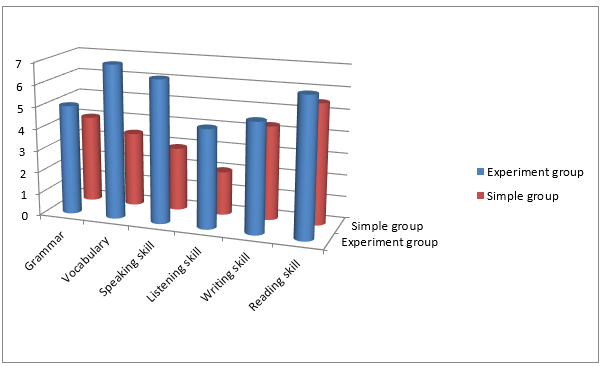Educational technology is the effective use of technological tools in learning. It includes numerous types of media that deliver text, audio, images, animation, and streaming video, and includes technology applications and processes such as audio or video tape, satellite TV, CD-ROM, and computer based learning, as well as local intranet/extranet and web-based learning. Which of them are helpful in teaching English at school? [1]
− Audio and video technologies are of the most useful tools for school children to learn English because the characters of 11–15 aged pupils are inclined to listening and watching various kinds of interesting topics. Classroom microphones can enable them to interact more clearly. Interactive digital video games are now being used in educational field. They are of great use, since a majority of school children are crazy about playing different video games, and if these games help to teach English, children learn the language with great enthusiasm and interest. But there should be a teacher who controls and leads the process.
− Computers, tablets and mobile devices. With recent developments in smartphone technology, the processing powers and storage capabilities of modern mobiles allow for advanced development and use of apps. There are several apps teaching the language: dictionaries with definition and pronunciation, grammar teaching apps, tests and questions, games teaching English. Computers and tablets enable learners and educators to access websites as well as programs such as Microsoft Word, Power Point, PDF files, and images. [2] Mobile learning can provide performance support for checking the time, setting reminders, retrieving worksheets, and instruction manuals. But there are also shortcomings in using these technologies: pupils of primary schools have difficulties in making use of them, as they are not old enough to understand such complex systems and need the help of the teacher.
− Social networks allow learners to post thoughts, ideas, and comments on a website in an interactive learning environment. This method is also useful for upper grades.
− Webcams and webcasting have enabled creation of virtual classrooms and virtual learning environment. Nowadays online teaching is being used as an important means of learning the language, as it gives an opportunity to have modern interactive lessons.
− Whiteboards predate tablets and other technological tools, but current interactive whiteboards and smart boards allow learners and teachers to write on the touch screen. The screen markup can be on either a blank whiteboard or any computer screen content. Depending on permission settings, this visual learning can be interactive and participatory, including writing and manipulating images on the interactive whiteboard. This tool is very convenient for school children to use in English lessons.
Research and results.
Now we discuss whether the technologies mentioned above matches or not for the pupils of secondary schools. In order to reveal the given problem, the experience was held with the participation of 13-year-old school children in the period between September 2015 and October that year. About 15 pupils were selected for experiment and another 15 pupils was only for comparing the difference and improvement between them. The first group was taught English with new educational technologies and the other group learnt English in an old simple way. The results of the research are shown in the following diagram:

Figure 1.
In the diagram there are given the improved degrees of pupils in percent’s. Within the arranged period of time, the two groups were offered the same materials to learn and with the help of educational technologies such as audio and video, computers, tablets, mobile devices, social networks, webcams and whiteboards the experiment group dominated the simple group. They gained more knowledge in a short period of time at an ease and comfort. The used educational technologies were helpful for the basic 4 English skills: reading, writing, listening and speaking, also grammar and vocabulary. They got accustomed to using new tools because they are widely being used in our daily life nowadays.
However, there are a lot of shortcomings in using educational technology. We are using the Internet, social networks, webcams, computers, mobile devices in our English lessons for schoolchildren, but they are massively open online courses — and we can’t know whether pupils are exactly searching the information related to the subject or just chatting and watching, reading unnecessary things. Another disadvantage is increased potential for cheating. Smartphones can be very easy to hide and use, these disadvantages can be managed with strict rules and regulations on mobile phone use. In order to carry lessons with educational technologies, there should be not only devices, but also teachers who are the masters of using IT. Another problem with modern educational tools is their expenditure. Too much money is needed to buy and make use of the new educational devices. But it is unknown whether we can return on investment to connect expenditures on technology with improved student outcomes or not.
Conclusion:
Experiment gives relatively good results despite the short period of study. They give a real opportunity to “break the pattern” and to enrich the English teaching process at secondary schools. Main factors are the improving curiosity of children to English by using modern educational technologies and “quick-and-easy” learning the language skills with the help of new devices. There are also appeared some problems in taking advantage of these fashionable tools. Solutions to the problems have also revealed: strict rules and skillful teacher.
References:
- Encyclopedia of educational technology/
- http//www.wikipedia.org

